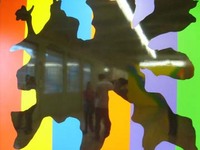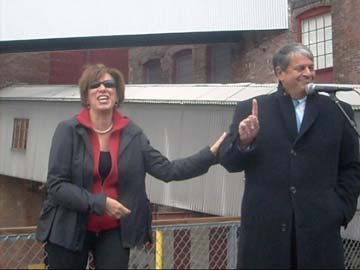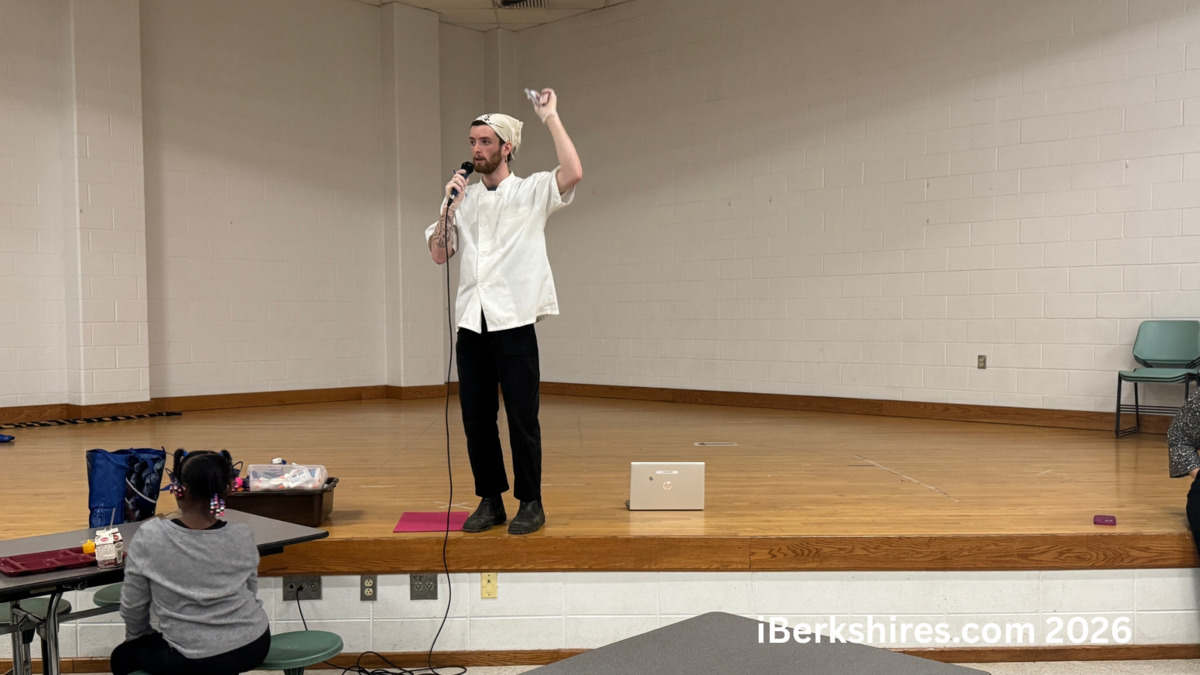
Sol LeWitt Exhibit Opens at Mass MoCA
 |
| View Slide Show |
The late artist went unerringly to the heart of the Massachusetts Museum of Contemporary Art, said Jock Reynolds, director of the Yale University Art Gallery and one of those instrumental in bringing LeWitt's works to life in the three-story space.
"He loved this building right away," said Reynolds, as he ushered a group through the 105 massive wall drawings created by nearly 60 artists over the past six months.
Hundreds of visitors were on hand Sunday for the grand opening of the MoCA exhibit, a 25-year display and the largest gathering of LeWitt's works anywhere.
A major attractor that solidifies MoCA's place in the art world, museum and city officials hope the exhibit fulfills the prediction to be "a site of pilgrimage for all those susceptible to the proposition that life can be beautiful as well as absurd."
"I think it will take awhile but I think it will build," said museum Director Joseph C. Thompson as he stood on the open stairway's second-story platform, overlooking a looping video of a rare interview with LeWitt, who died last year. "I think people who like Norman Rockwell and go the Rockwell Museum and who like the impressionists at the Clark [Art Institute] will like this."
 Carol LeWitt and Mayor John Barrett III at the Sol LeWitt retrospective opening |
The works cover 40 years of LeWitt conceptualizations, written instructions that can be recreated virtually anywhere. The artists selected and mapped out where each work would go; Reynolds said 98 percent of gallery was exactly as he had planned (there was a slight change because of an elevator).
Beginning on the first floor are his earliest works, precise lines in primary colors drawn horizontally, vertically and diagonally (four directions) that create subtle patterns in grids that, like the impressionists, can be appreciated close up and at a distance. They continue on to the second floor, with greater use of ink washes to create depth (always working in primaries) and up to the third with its neonlike acrylics and vibrancy.
Thompson described LeWitt's concepts as a paradox both hopeful and liberatin. "It's all kinds of paradoxes, it doesn't always line up. You read six words on a label and then you see this amazingly complex drawing that's 60 feet long. It's almost magic that six words would be interpreted into that."
It also inspired visitors to have their pictures taken against the walls, interacting with the works.
LeWitt's archecturally resonant works were reflected in the ribbon-cutting ceremony opening the exhibit to the public. Six red strings were pulled taut from different exterior points on Building 7 to the windswept pavilion where visitors were gathered. Each string connected to one of the access points into the gallery.
Each one was snipped by the individuals who made the dream come true, first and foremost Carol LeWitt, the late artist's wife.
"It's Sol's paintings in there but your fingerprints are all over it," Mayor John Barrett III told her, adding her daughters played equally an important role.

Fellow collaborators Reynolds, Thompson and Lisa Corrin, director of the Williams College Museum of Art, each cut a line; the mayor got two.
"This is good news for future of North Adams and Mass MoCA," said the mayor. "It's going to benefit not only our generation but future generations."
Barrett has often spoken about the city's gamble on Mass MoCA, supporting what was then considered the crazy idea of turning the vacant manufacturing space into a contemporary museum and looking at the arts as an economic catalyst.
"This is probably the smartest move we made in the last 20 years — diversifying our economy and using the arts as catalyst," he said. "If Sprague Electric had been here today, we probably would have seen layoffs of a 1,000 to 1,500 people, General Electric would have been similar. ... We're much better positioned than we were 20 years ago."
WCMA will continue to explore educational opportunities related to LeWitt, including access to some 11,000 works the artist and his wife collected.
Veronica Bosley was inspired by LeWitt's wall drawing at WCMA after seeing it on a class trip.
"It was sort of in passing, and there was all these rainbow colors and it thought it was the greatest thing ever and since then I've been into Sol LeWitt," said Bosley, former coordinator for MCLA's Berkshire Cultural Resource Center. "I like it so you can come back. ... [with other MoCA exhibits] it's hard to come back and see them again. When I go to the Clark there's always paintings that I want to see."
 Art lovers will have 25 years, probably more, to linger over the mile of walls, and the chance to return again and again.
Art lovers will have 25 years, probably more, to linger over the mile of walls, and the chance to return again and again.It's what Williams instructor Cassandra Cleghorn is planning to do. Surrounded by seven youngsters (four hers) she said, "I wanted to see what they did with the new space."
"We thought it was a pretty historic day and that they would like the art," Cleghorn continued, pointing to a particularly bright wall on the third floor. "So we just had this idea that every year for the next 25 years we'll come and stand in front of it and have our picture taken."
















